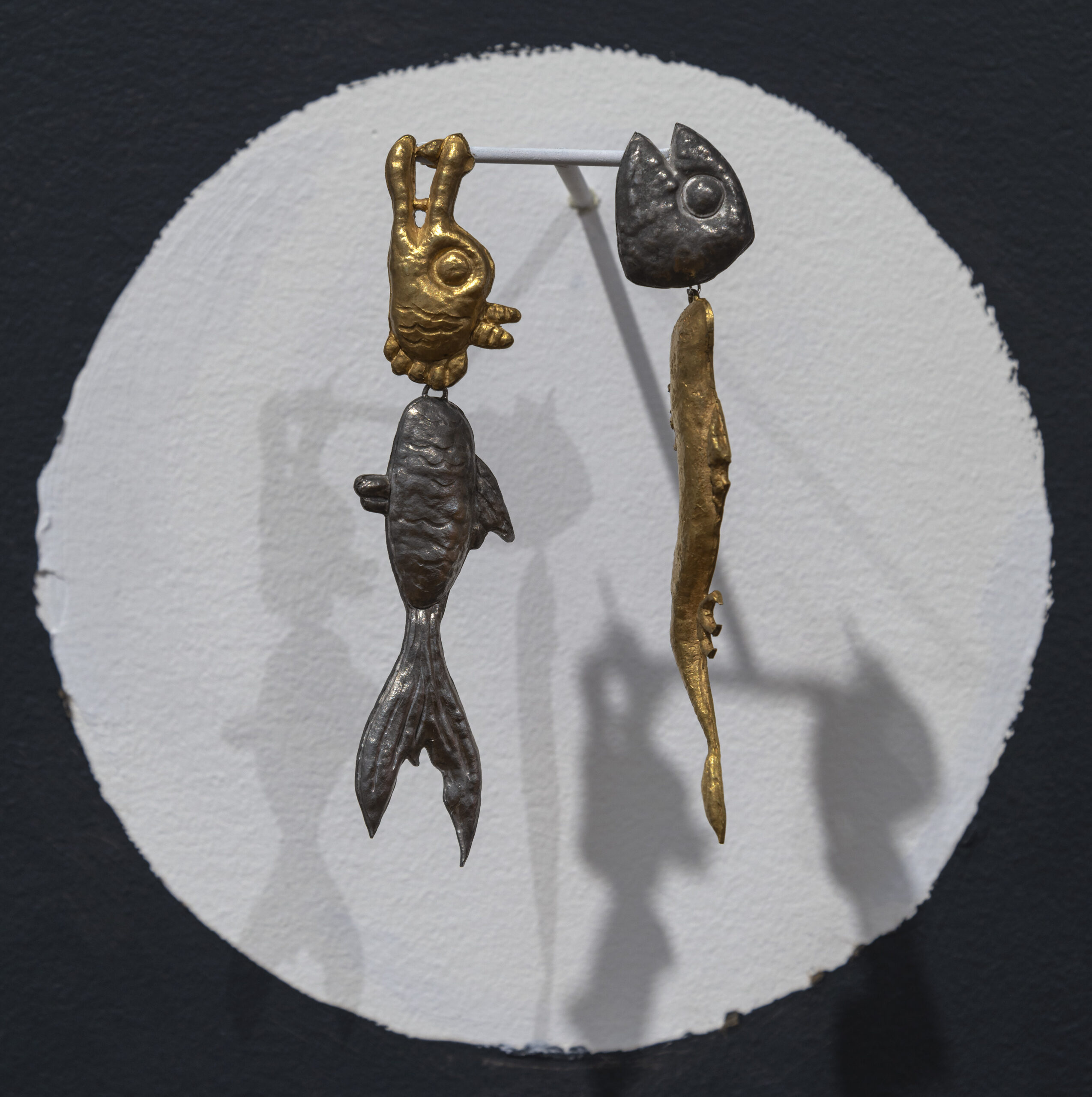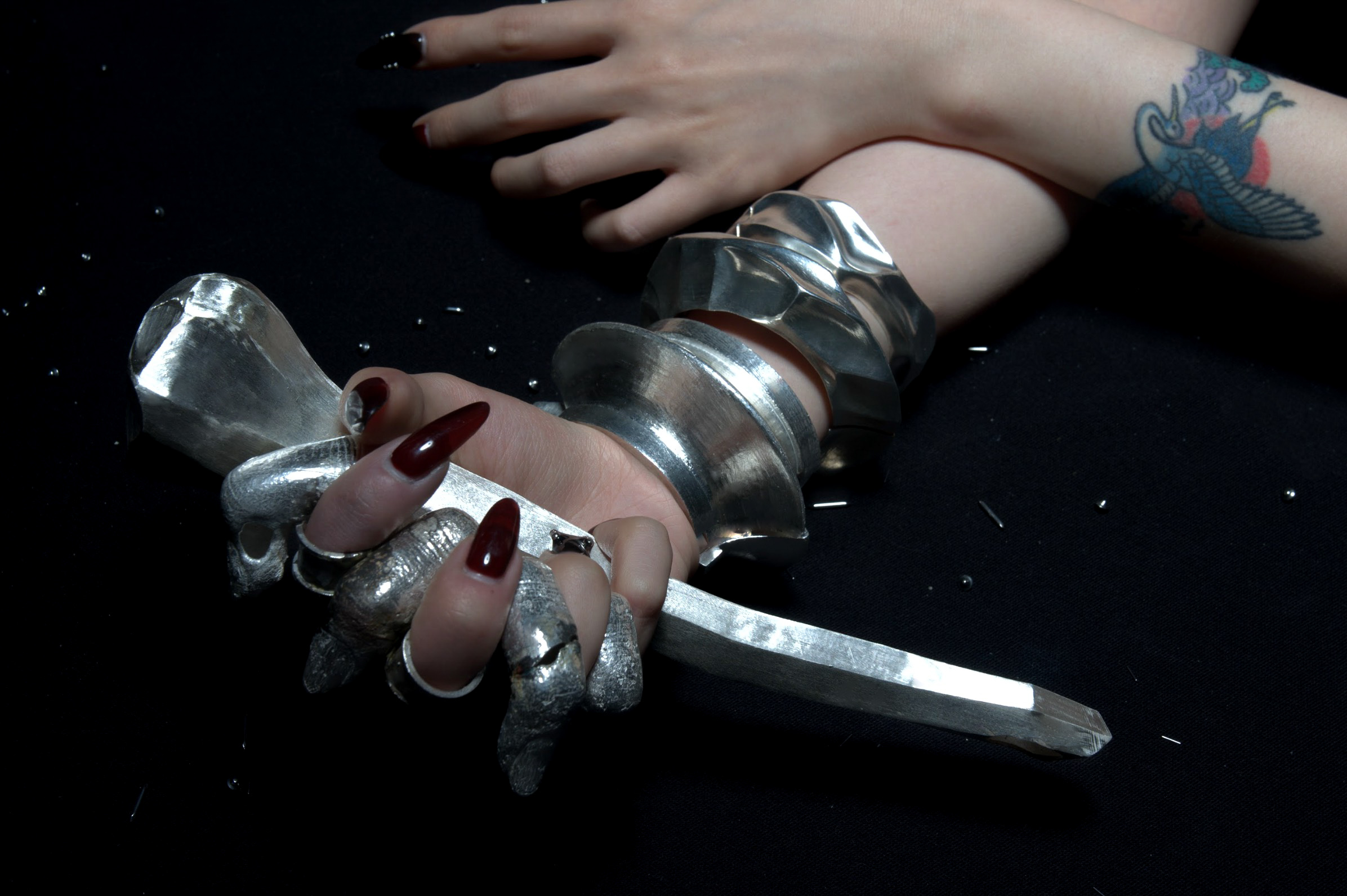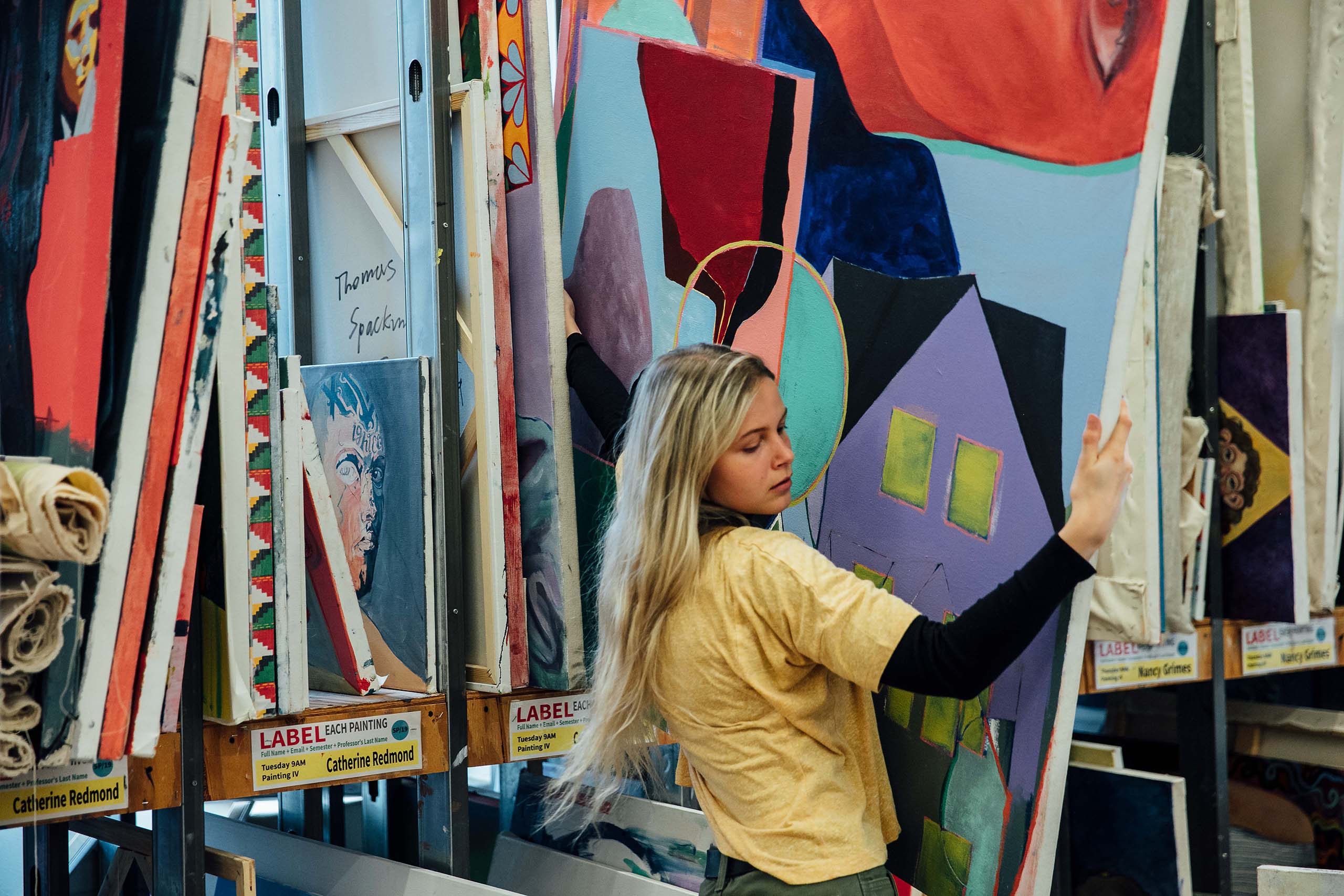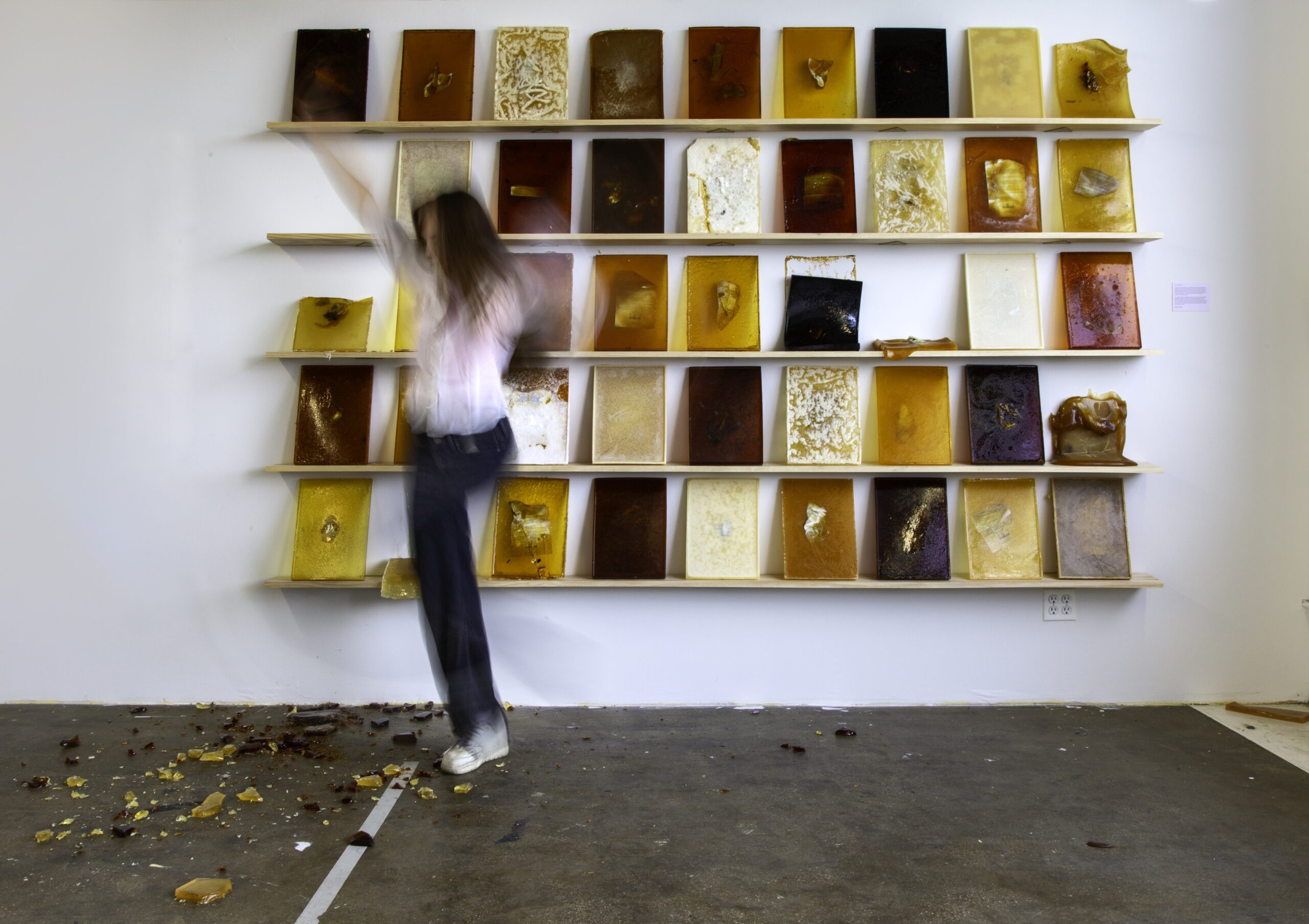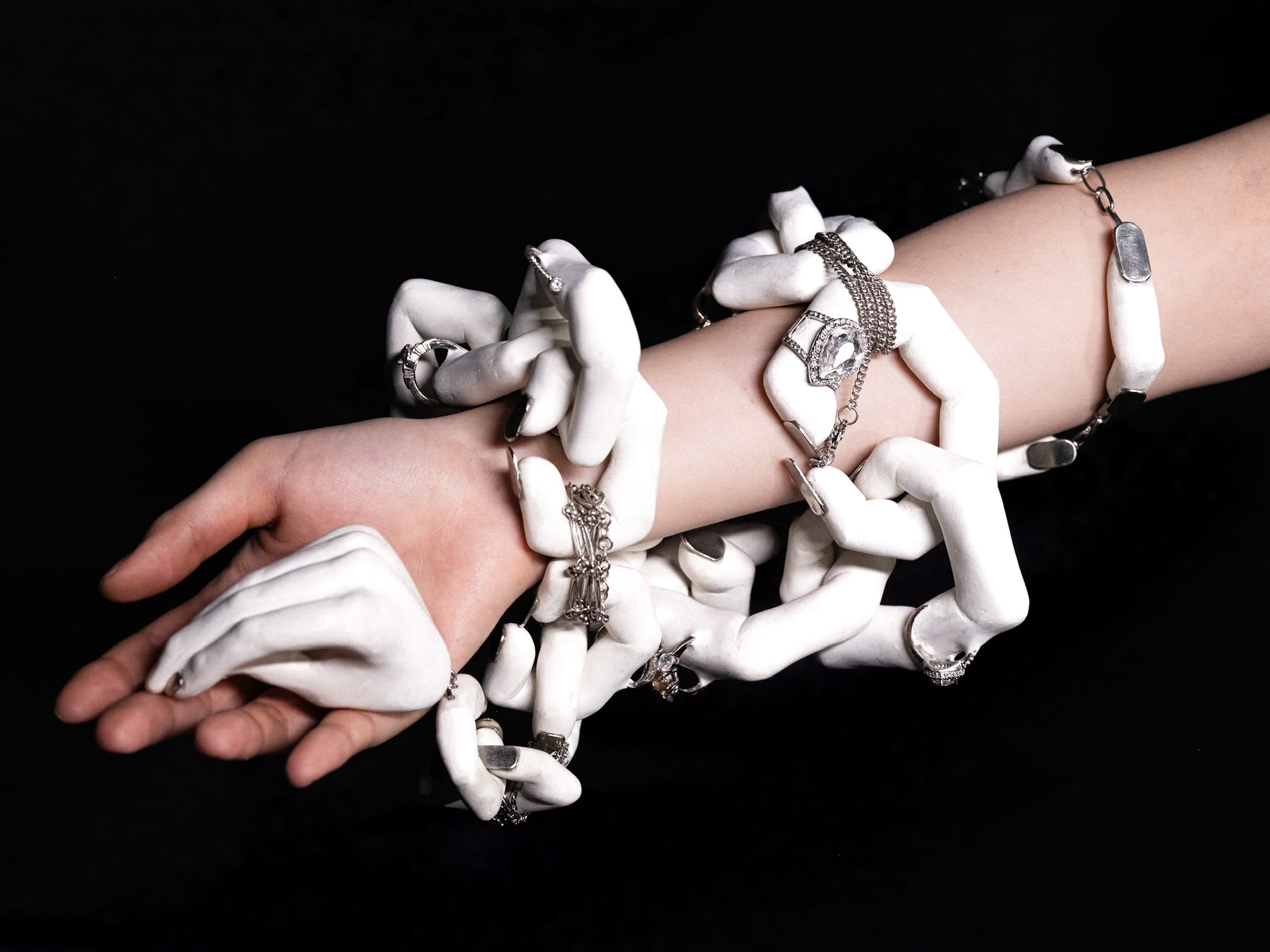
All first-year students take the Foundation program’s core curriculum, along with required art history and liberal arts courses, and begin the fine arts major curriculum in the fall of the second year. While continuing with their required art history and general education coursework, second-year students take more focused courses in their chosen area of emphasis, whether painting, drawing, printmaking, sculpture and integrated practices, or jewelry. In addition to their studio requirements, all fine arts students take a series of departmental seminars that address social, historical, and critical issues in contemporary art.
Beyond their major requirements, students may use elective credits to take courses of their choosing, to pursue a minor in a second field or discipline, or to gain internship experience. The senior year is focused on developing a self-directed body of work for the senior thesis exhibition in the spring semester. Departmental courses in professional practice help students prepare their portfolios and make a realistic plan for sustaining their careers after graduation through approaching funders, galleries, residency opportunities, and employers.
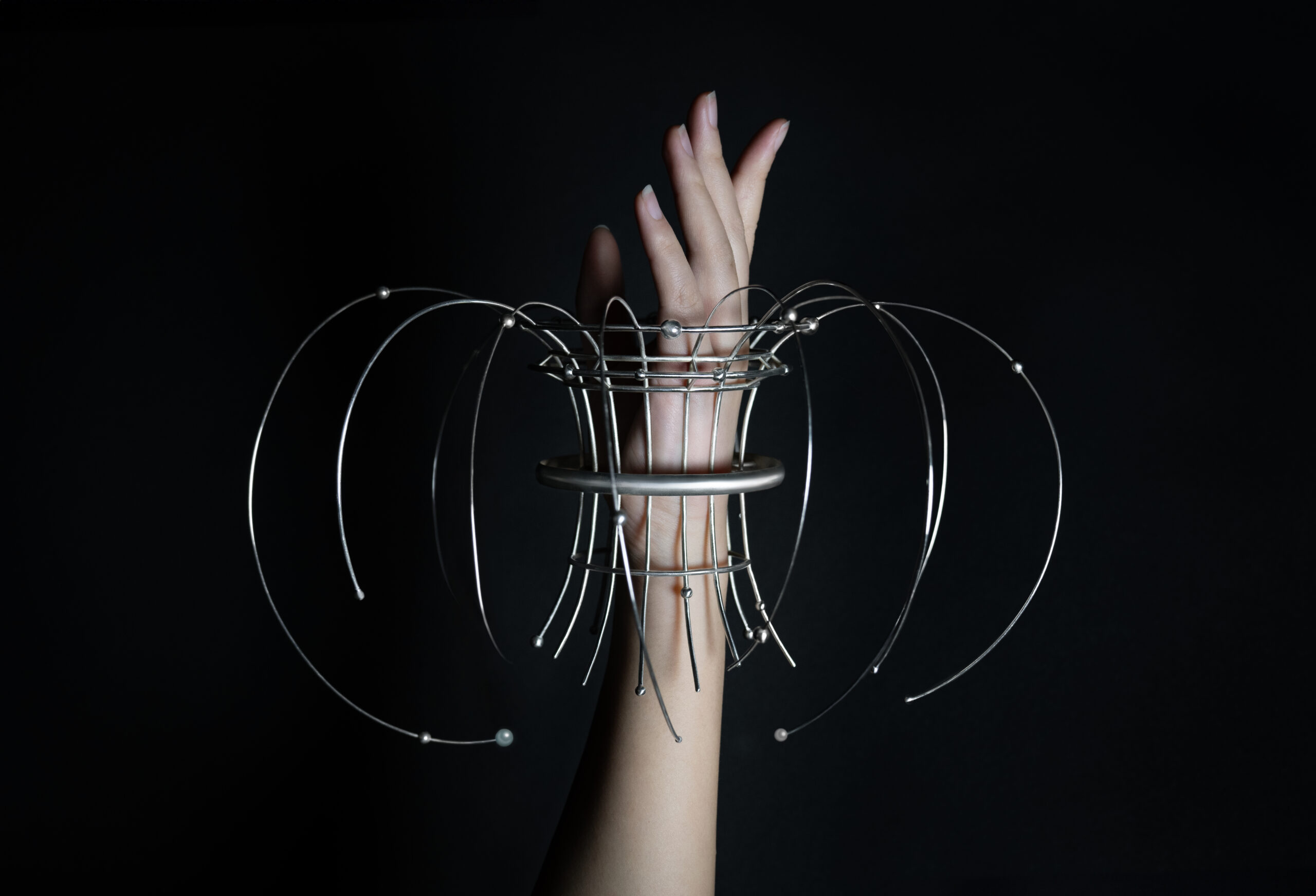
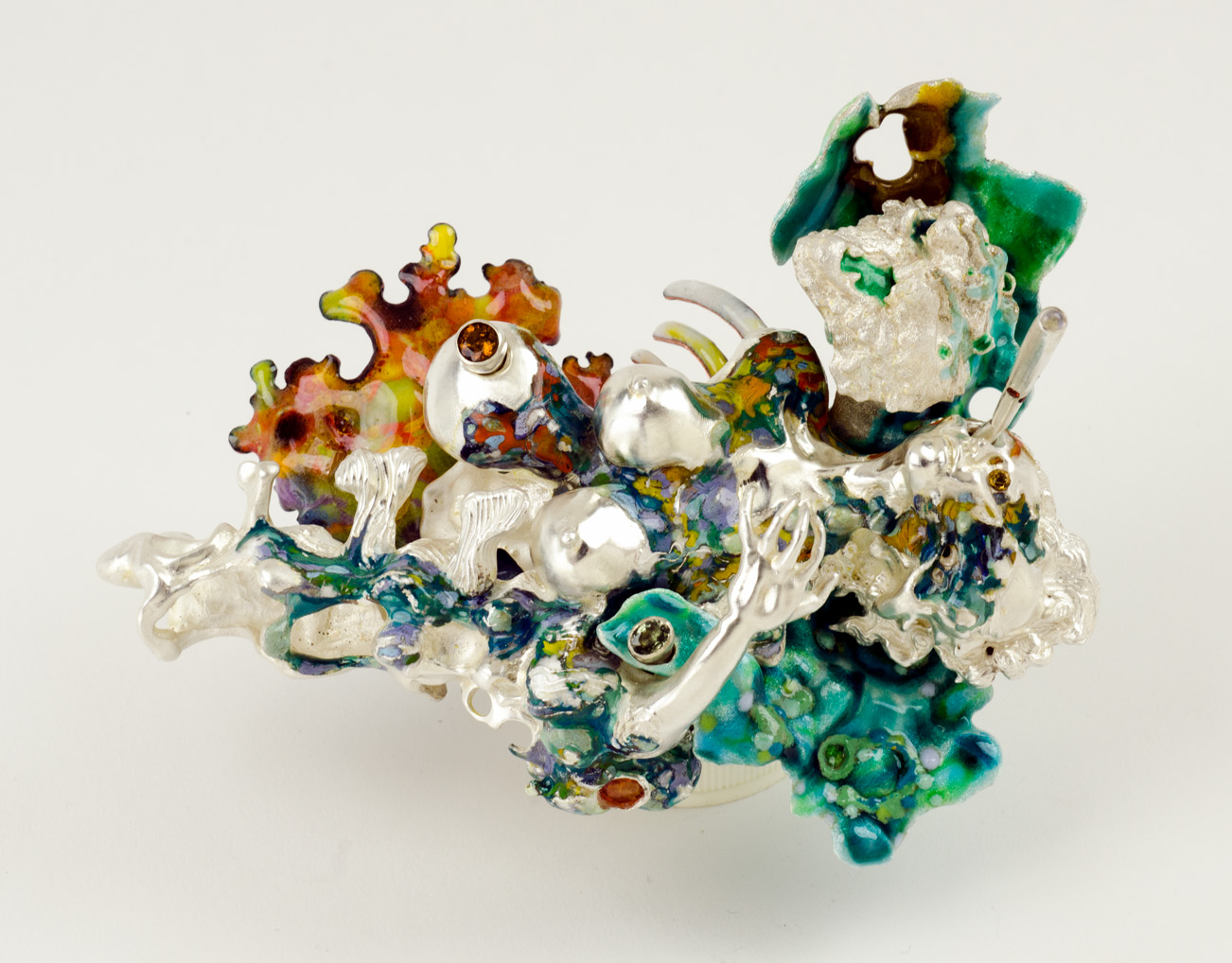
Students will:
- Understand basic design principles, emphasizing both two- and three-dimensional design;
- Understand the possibilities and limitations of materials used in the fabrication process;
- Gain knowledge and skills in the use of tools, techniques and processes, including their roles in the production of work from concept to finished object;
- Understand the aesthetic use of raw materials as well as technical benchworking procedures for the direct fabrication of pieces;
- Design and execute jewelry and metalwork using a variety of metals and other materials;
- Have experience in casting, chasing, raising, enameling, and other metalworking processes;
- Understand the place of jewelry and fine metalworking in the histories of art, design and culture;
- Have a functional knowledge of basic business practices;
- Have a basic understanding of end-user psychology, human form and function, and user interface;
- Be able to work independently and complete a final project related to the exhibition of original work and have the opportunity to submit to exhibitions, galleries and retail outlets.
